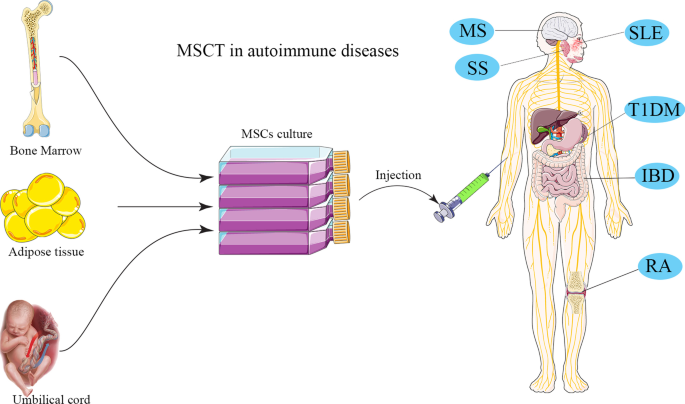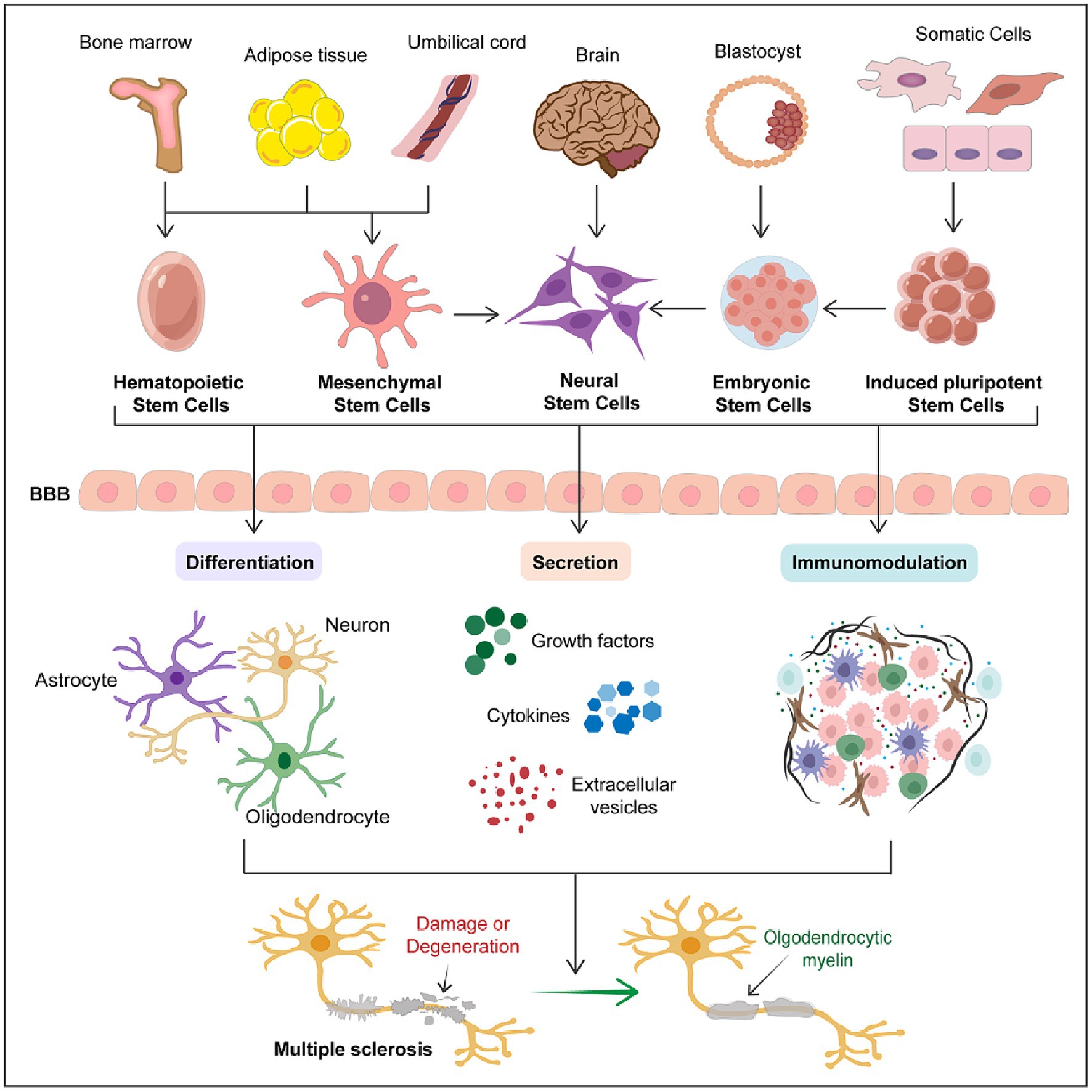Getting The Regenerative Medicine For Multiple Sclerosis To Work
Wiki Article
Everything about Regenerative Medicine For Multiple Sclerosis
Table of Contents10 Easy Facts About Regenerative Medicine For Multiple Sclerosis ShownRegenerative Medicine For Multiple Sclerosis Things To Know Before You BuyHow Regenerative Medicine For Multiple Sclerosis can Save You Time, Stress, and Money.How Regenerative Medicine For Multiple Sclerosis can Save You Time, Stress, and Money.Regenerative Medicine For Multiple Sclerosis for DummiesNot known Incorrect Statements About Regenerative Medicine For Multiple Sclerosis The Regenerative Medicine For Multiple Sclerosis Statements
The mesenchymal stem cells hair transplanted during stem cell treatment can divide and mature to develop new cells that can take the area of the damaged cells of the worried cells. This may bring back neurological features in patients with this problem. These benefits of stem cell therapy are further supported by the capability of MSCs to advertise healing.People with several sclerosis are normally treated with mesenchymal stem cells. These are multipotent stem cells that have the capability to differentiate and grow to form a large range of cell enters the body. When transplanted, these stem cells can create to develop healthy and balanced nerve cells hence sustaining the regrowth of the broken cells of the nerve system.
As soon as transplanted, the stem cells move to locations of swelling or damages within the main worried system (CNS). They are normally attracted to the websites of injury where the immune system is attacking the myelin sheath, the protective covering of nerve fibers. The stem cells work by promoting the repair and regrowth of harmed myelin, potentially recovering function to affected afferent neuron.
The smart Trick of Regenerative Medicine For Multiple Sclerosis That Nobody is Discussing
Stem Cell Research Study on MS The National Numerous Sclerosis Society, in addition to various other companies, is proactively funding and supporting study into mesenchymal stem cell therapy for numerous sclerosis to explore their prospective and boost therapy protocols. The goal is to create much safer and extra efficient ways to make use of stem cells in treating MS.
Right here are evaluations from patients of the Swiss Medica facility. The client traveled from England seeking relief from his MS signs, a problem he has fought since 2006. For many years, he has battled with exhaustion, mobility concerns, and complications with his bladder and bowel, all coming from nerve damages.
His treatment experience was smooth. He likewise appreciated that his travel, lodgings, and vegan nutritional choices were attentively prepared. "The clinical staff were impressive, particularly the medical professional. Everything was clearly clarified, and they were complete in their checks. I would absolutely recommend this place." The client took a trip from Romania seeking therapy for MS after hearing favorable feedback about stem cell therapy for the condition.
Obtain a free online appointment to learn exactly how stem cells will work for your instance, and what are the duration and cost of the therapy. Uccelli, A., Laroni, A., Brundin, L., Clanet, M., Fernandez, O., Nabavi, S. M. Regenerative Medicine for Multiple Sclerosis., Muraro, P. A., Oliveri, R. S., Radue, E. W., Sellner, J., Soelberg Sorensen, P., Sormani, M. P., Wuerfel, J. T., Battaglia, M
Stem cells are cells in the body that can mature into grow cells that serve a specific functionDetails There are two primary types of stem cells: embryonic stem cells and adult stem cells.
are located in some grown-up cells and body organs consisting of the bone marrow, skin, blood, and brain. Adult stem cells are not as adaptable as beginning stem cells and are consequently a lot more limited in terms of the sorts of cells they develop into. The special properties of stem cells supply pledge for new treatments that can slow/halt MS condition task and repair cells damage in the main nervous system.
The Basic Principles Of Regenerative Medicine For Multiple Sclerosis

The treatment entails collecting stem cells from an individual's very own (autologous) bone marrow. The person is after that treated with radiation treatment to diminish the body immune system and stem cells are reintroduced into the body where they mature into brand-new, healthy and balanced immune cells - Regenerative Medicine for Multiple Sclerosis. Stem cells can be injected into the body in various ways

In 2000, the MS Culture of Canada and MS Scientific Research Structure funded a clinical trial entailing HSC transplants, led by Drs. Mark Freedman and Harry Atkins from the Ottawa Healthcare Facility Research Study Institute/University of Ottawa. The aHSC treatment readily available in Canada is a therapy that makes use of high-dose chemotherapy, likewise called conditioning.

Regenerative Medicine For Multiple Sclerosis Things To Know Before You Get This
Neural stem cells (NSC) are discovered in the mind and can mature into various sorts of brain cells including neurons, oligodendrocytes, and astrocytes. NSCs may serve to repair or secure the brain and modulate the immune system. Early clinical tests in non-human primates demonstrated that therapy with NSCs profited the progression of MS-like condition in animal designs.The results from these safety studies declare for future stem cell and regenerative medicine therapies in MS. Future medical trials (phase 2 and 3) with larger varieties of individuals and controls are needed to examine the efficacy of this therapy for MS. As demonstrated by the instances above, there is a huge selection of research happening that will provide extra answers regarding using stem cells to deal with MS.
Stem cell therapy is taken into consideration risk-free, yet, like any kind of clinical procedure, it carries some risks, such as temporary swelling or discomfort at the shot site. However, major side results are uncommon when done by qualified experts.
Regenerative Medicine For Multiple Sclerosis - Truths
Several sclerosis (MS) is a persistent illness of the central nerves that impacts the brain and spine. It is identified by the destruction of myelin, a compound that covers nerve fibers, bring about disruptions in interaction between the mind and the rest of the body. Signs can vary commonly and consist of muscle mass weakness, vision problems, inequality, top article and exhaustion.Numerous sclerosis is characterized by the immune system incorrectly assaulting the safety sheath (myelin) that covers nerve fibers, creating interaction issues in between the brain and the rest of the body. The illness can result in the damage or long-term damage of nerves. Signs differ commonly among individuals and can include fatigue, flexibility concerns, discomfort, and cognitive adjustments.
Report this wiki page